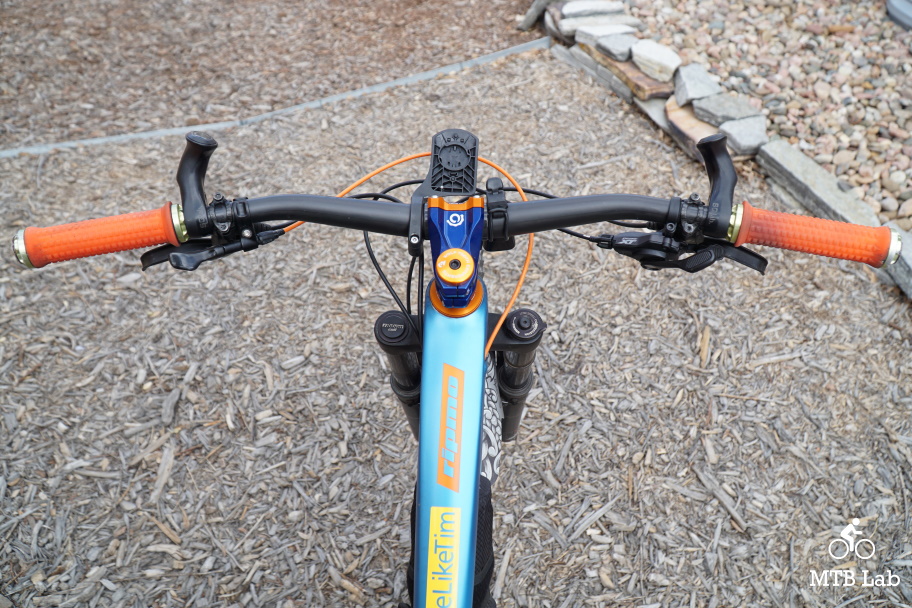
Long-term mountain bike riding, especially on rugged terrain, can cause trauma, injuries, and abuse to the hands and wrists. I have suffered swelling, numbness, and pain, especially with my right hand, exasperated by thumb arthritis. I have been using the innovative SQlab 311 FL-X handlebars, the functional SQlab 411 Innerbarends, and Revolution Suspension Grips on my mountain bikes. These ergonomic steering control systems and designs have alleviated some of my hand and wrist issues, making riding more enjoyable and less fatiguing.
For further information, refer to sqlab.com and revgrips.com.
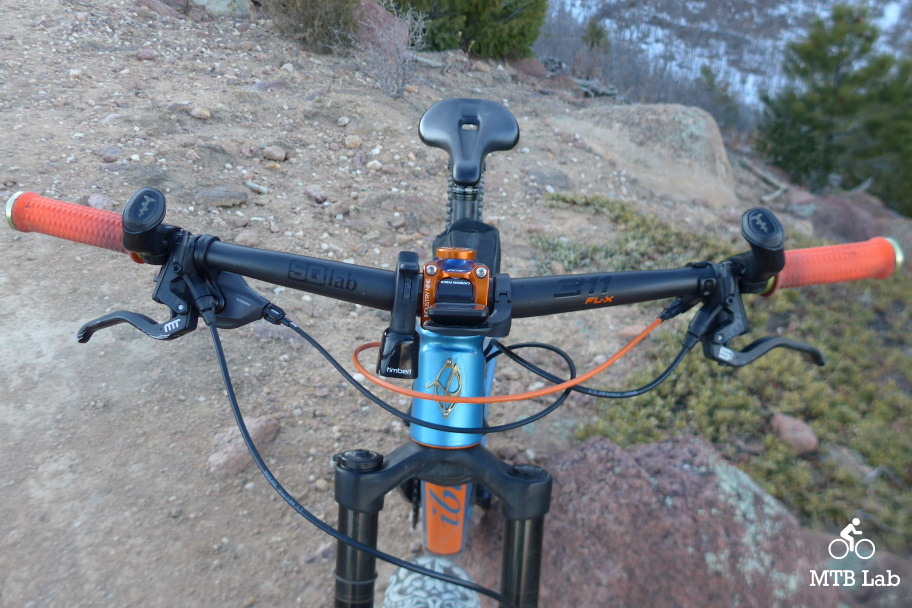
SQlab 311 FL-X Handlebars
The SQlab 311 FL-X (i.e., Flex) carbon fiber handlebars are designed for mountain biking and have a 4º upsweep, a 15mm or 30mm rise, a 16º or 12º backsweep, and a 740mm width. The increased backsweep provides improved and more natural ergonomics when riding, decreasing fatigue and injuries. The 15mm and 30mm rise versions weigh around 210 grams and retail for $249.99.
The bars I tested featured a prominent 16º backsweep, a 30mm rise, a 740mm width, a 31.8mm clamping diameter, and weighed 209 grams. The backsweep prevents hyperextending the wrists, provides ergonomic hand and forearm, and elbow positioning and reduces Carpal Tunnel Syndrome issues and hand numbness. The 740mm wide bars can be shortened to 720mm if desired, though I found the 740mm sizing to be ideal, not too wide, and not too short.
The ergonomic bars utilize functional sweeps and rise and designs to improve comfort, optimize positioning and decrease hand fatigue and hand-related issues. The carbon fiber damping offers a welcome softening to rough trails without feeling sloppy. The 311 FL-X was designed with regard to their flex behavior, and instead of the typical carbon bar damping characteristics between 0% to 15%, the 311 FL-X have between 20% to 30%. This higher flex pattern decreases terrain chatter and vibrations, softens the ride, and offers an overall more soothing tactile feel without losing any steering precision.
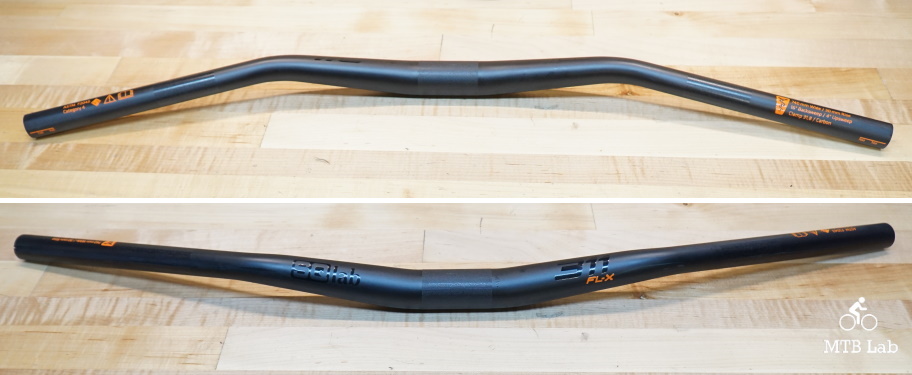
The bars have broad sweeps and high rises, so they felt just about perfect in a neutral setting after performing some seated tuning in my home shop. That rotation created a natural fit for my hands, without any overextension or odd contortions of the wrists. I found the sweep and rise comfortable and easy to get used to, without any hand or wrist distress.
The stem and brake/shifter clamp area have an anti-slip zone to prevent the bars from creeping around, making for easier tuning adjustments and security. The bars have a lovely beaded finish and don’t seem to scratch, even after installing multiple pieces of gear on and off the bikes while doing all the control system setups.
The German companies SQlab and Syntace both make handlebars that can take an impressive amount of stress and abuse without breaking and fatiguing, and the 311 FL-X is a testament to their strength and stability. Even with this overbuild quality, the bars still weigh a decently light 209 grams.
The 311 FL-X carbon handlebars offer excellent ergonomics and a comfortable and natural hand orientation, with a helpful combination of backsweep and upsweep and soothing damping flex.
For a slightly cheaper alternative, the SQlab 311 handlebars are made from 7050 aluminum alloy, weigh 290 grams, and retail for $89.99. The bars have a 16º or 12º backsweep, a 15, 25, or 50mm rise, a 740mm width, a 10mm forward sweep, and a 5º upsweet, which keeps you up forward in a comfortable heads-up position.
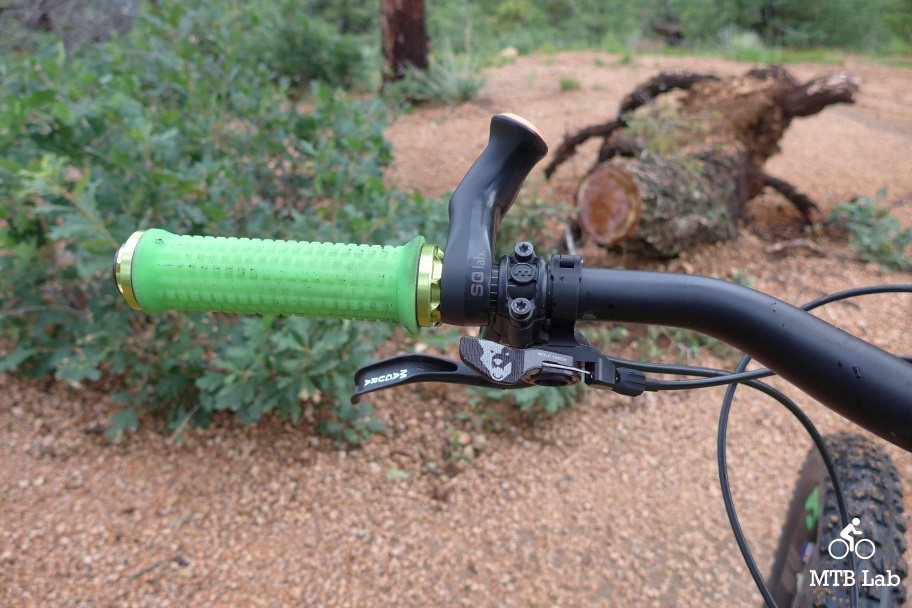
SQLab 411 Innerbarends
Their Innerbarends or ‘Inwards mounted bar ends’ are innovative and unique and were designed to be positioned inwards of the grips. The Innerbarends are made from fiber-reinforced plastic, have a single clamp bolt design, weigh 102 grams for the pair, and retail for $44.99. Bar grips help alleviate stress by offering multiple hand positions on the handlebars and providing the ability to move things around while riding.
The Innerbarends provided additional leverage and positioning when using wide handlebars, and they resided just inwards from the standard handgrip locations. I could pistol grip the Innerbarends while I rested my outer palm on the padded inner portion of the grips, providing excellent comfort to the Ulnar nerve. Holding the bars differently offered muscle relief for the hands, arms, shoulders, neck, and back and were advantageous for fire roads, flat trails, climbs, and long days in the saddle. I used them around 40-60% of the time during a ride, especially on the flats and while climbing. Their hand positioning felt very natural and ergonomic, and it helped with hand numbness and tingling. Being able to move my hands around on the bars, along with pulling the elbows towards the torso, provided additional comfort and decreased fatigue. I was also able to apply pressure backward on them to help with traction and control on steep climbs, where they offered some additional leverage for my hands. I was able to brake without any issues, though it was only light braking and wasn’t helpful for anything technical or abrupt.
The Innerbarends are wicked cool and highly functional, and the hand and arm relief and hand position alternatives they provide are much appreciated. SQlab 411 Innerbarends Long-Term Review
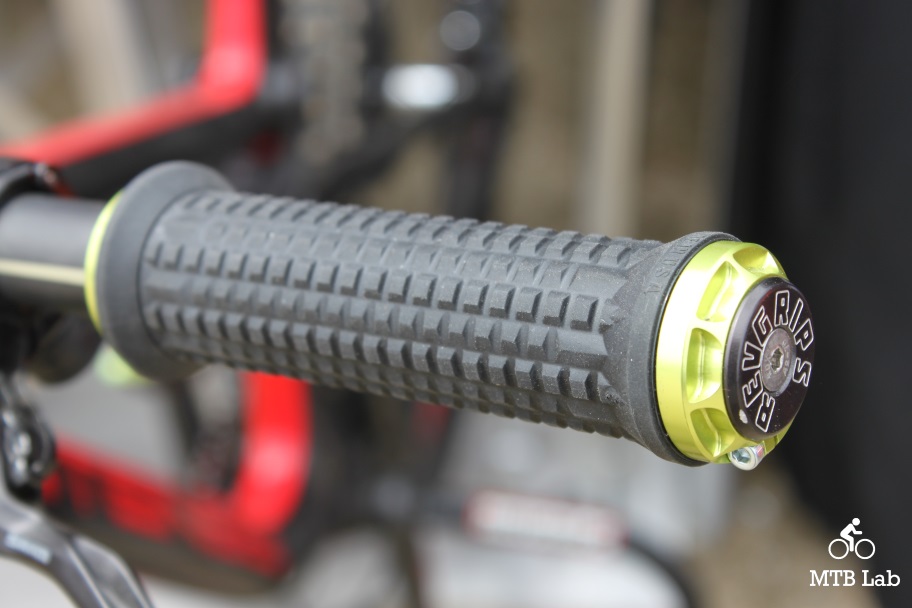
Revolution Suspension Grips
The Revolution Suspension Grips is an innovative system that isolates your hands and upper body from the shock and vibration propagated through the handlebars from the trail. Their design helps decrease fatigue, repetitive injury, and arm pump.
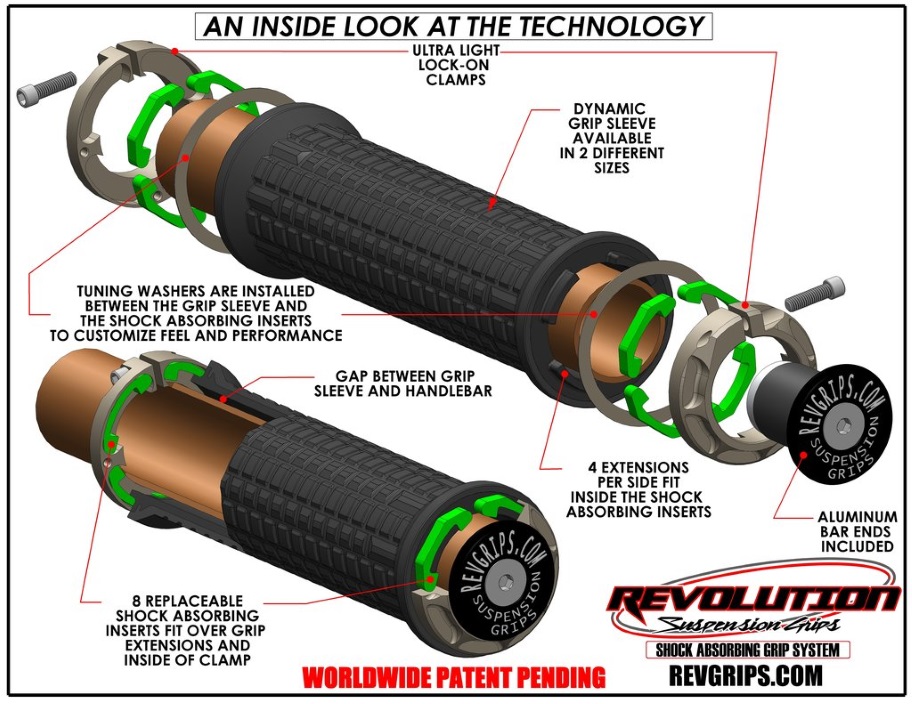
The system features a two-collar lock-on configuration, an inner plastic sleeve that is larger than the handlebar and floats within shock-absorbing inserts or dampers in the collars, and finally, a nubbed rubber grip. The lock-on system doesn’t allow the grips to spin entirely, and when used in person, you can feel the minute amount of circumferential rotation, which is only 3-4mm of movement.
It comes in two versions, the tuneable Pro Series Shock Absorbing Grip System for $89.95, which I tested, and the fixed Race Series Shock Absorbing Grip System for $59.95. The Pro version comes with tuning washers that provide an adjustable feel from firm to soft, and it comes in various grip and lock-on clamp color options. The fixed tuned Race version offers a medium-soft feel ( Black color only). Both versions come in three grip diameters, Small (31mm), Medium (32.5mm), and Large (34mm). The Pro also comes in an RG ergonomic version, with four different diameter options: RG4, RG5, RG6, and RG7.
They offer isolation of your hands and upper body from the shock and vibration that comes through the handlebars and grips, which provides decreased fatigue, injury prevention, greater control. I prefer to call them an isolating grip system instead of a suspension product. There is a minute amount of rotational play and a little vertical movement during use, and the latter soon is hardly noticeable. The softest tuning setting offered a better overall ride due to improved shock and vibration absorption, and it significantly helped with my troublesome thumb arthritis.
Though the Pro Series version is expensive for a set of grips, the added benefits for tuning, decreased fatigue, impact absorption, injury prevention, comfort, and greater control make up for the pricing deficit. I am spoiled after using them, and I am not sure if I could ever go back to using standard grips. Revolution Suspension Grips Review.
- Complete RG Pro Grip System $89.95
- Complete RG Race Grip System $59.95
- RG Rebuild Kit $34.95
- Replacement RG Sleeve Set $24.95
The grips are available through local bike shops and online through www.revgrips.com.





{ 0 comments… add one now }